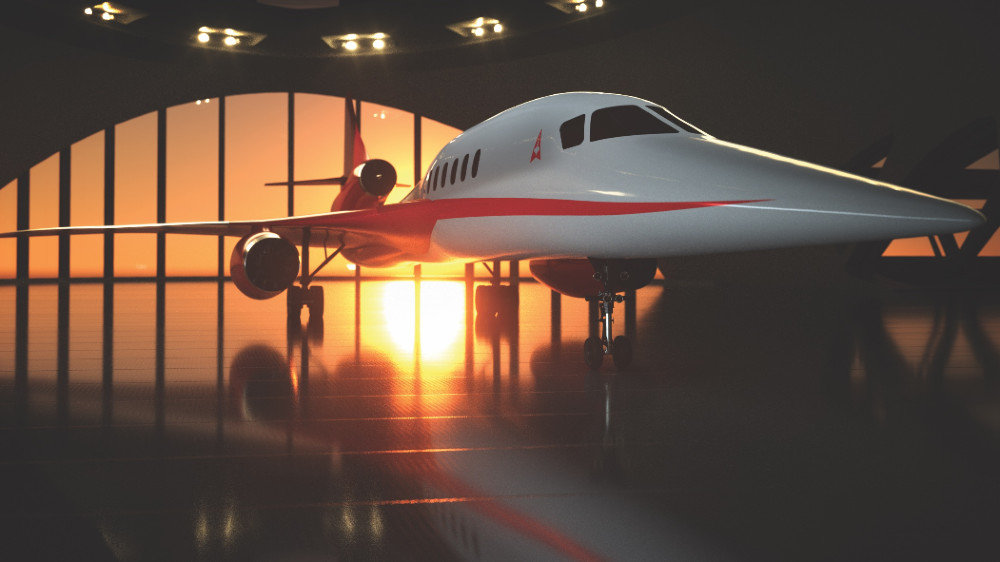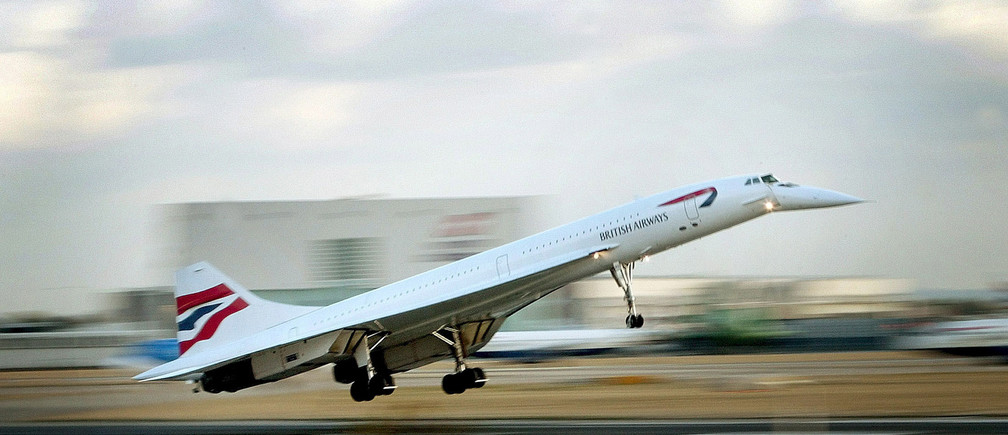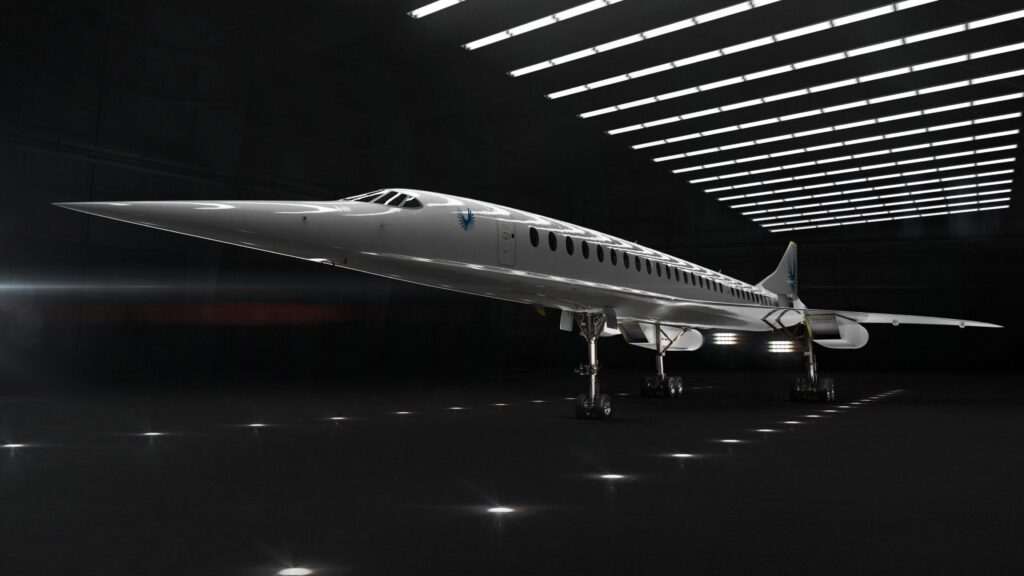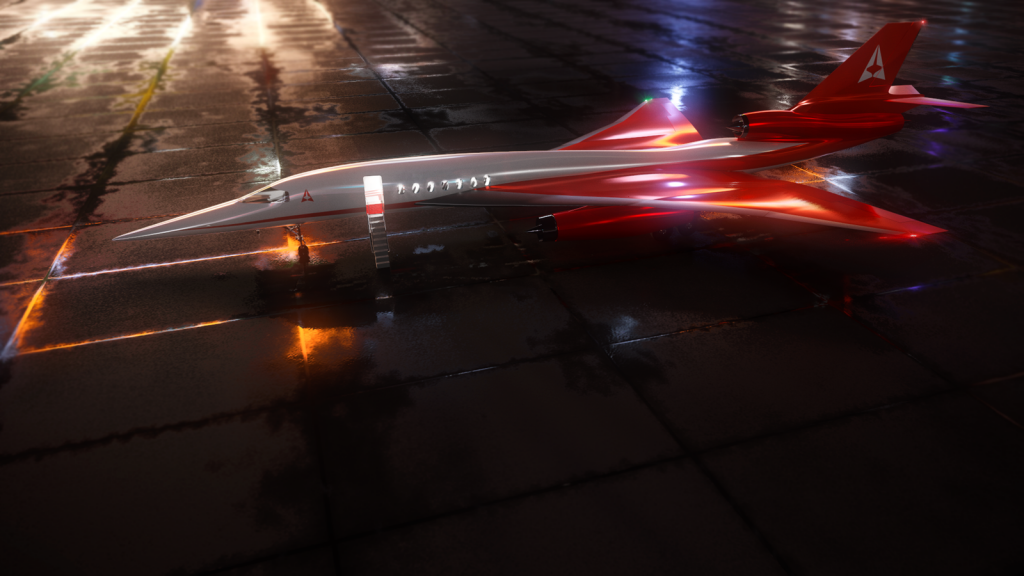Two big pieces of supersonic news have hit headlines in recent weeks.
The good news was that a US major has agreed to purchase fifteen Boom supersonic jets still in development, with the option to purchase many more. All going well, they’ll be gracing the upper flight levels by the end of the decade. Cool stuff right?
But then the bad news was that Aerion Supersonic, widely regarded as being the closest to delivering a viable supersonic business jet, shut down after seventeen years and many millions of dollars spent trying to make the dream a reality.

The boomless, carbon neutral AS2 jet concept. | Aerion
This emotional roller coaster poses an important conundrum: purchase agreements are one thing but are we really that close to commercial supersonic flight? When you start digging it becomes clear just how much the sound barrier becomes a hurdle for the industry as it stands today.
And it’s not just about shock waves either – even though it’s possible, will it ever be profitable?
The iconic Concorde to this day remains one of only two commercial supersonic jets that was were in service (the Tupolev briefly being the other). In its twenty-seven year career of rattling windows at JFK and Heathrow, its profits were certainly subsonic. It’s possible that in its legacy it leaves an unpleasant truth: is it really worth flying faster than Mach 1?
The aviator inside me hopes so, but the writing may already be on the wall.

Can the legacy of Concorde teach us some valuable lessons?
We know we can build it, but here are the issues.
Ironically the formula to going supersonic appears quite simple: take a super slippery airframe, make it heat resistant and then liberally apply loads of power. But if only it was that easy.
When things go boom.
Firstly there’s the issue of sonic booms. ICAO’s current policy says that operators have to ensure that no ‘unacceptable situation’ is created for the public by the sonic boom of a commercial aircraft. The FAA have taken it further and said no-bueno to any commercial ops above Mach 1 over the US unless you have very special permission.
Low-boom technology is real, using special shapes to reduce the impact of the big bang on the ground but we’re still a ways-off going zero-boom in the near future. You might be thinking – why not go subsonic over land and wind it up over the ocean? That works for trans-continental flights but not so much for long legs over land. To make matters worse, supersonic airframes don’t fly efficiently at subsonic speeds. It would just not be viable to fly subsonic for hours burning copious amounts of gas.
What’s that noise?
All sonic booms aside, there is still an issue with noise. As speeds become supersonic, jet engines must lose bypass to stay efficient. The huge N1 fans we see on modern subsonic jets would only cause huge amounts of drag at high speeds.
Unfortunately this means they have a tendency to be ear-splittingly loud when they take off and land. Just listen to a video of Concorde – cool, yes. But legal? Not with today’s regs. Here’s what I mean.
Although this is set to change, ICAO hasn’t yet published specific noise guidelines for supersonic aircraft. Instead they say that noise levels for subsonic aircraft can be used as the guideline. The FAA say that commercial supersonic aircraft are banned unless they meet stage 2 noise limits – what are those you say?
They’re about as loud as older aircraft like the 727. For comparison, they used to produce around 90 decibels on the roll. Concorde once recorded 120 – about the same as a clap of thunder.
It’s clear that engine technology needs to be drastically different and new regs will need to be written to let the supersonic birds fly.
What about the trees?
The industry is in the midst of a massive move toward sustainability and the goals are ambitious. ICAO for instance is tasked by the Kyoto Protocol to control aviation’s burn-off that affects global warming. They’re now targeting carbon neutral growth until 2050 despite how quickly things once again begin to expand. There is an industry-wide push toward alternative fuels including hydrogen and Sustainable Aviation Fuel which can be run in conventional turbine engines using waste products that need to be seen to be believed.
The world is worried about global warming, ozone depletion and air quality and super-fast jets just don’t fit this mould. The future wants us to be squeaky-clean. This is a big barrier to supersonic aviation as the industry is unlikely to give the thumbs up to new technologies without knowing whether they are playing their role in keeping emissions down.

Sustainability – one of major barriers to supersonic flight.
But how will she handle?
Then there’s the airframe. We’re going to fly these things which means they need to perform on several levels. First of all they need to have acceptable handling and ride qualities – and delta wings are different. They need to be safe, and the passengers comfortable.
And how will they perform at high altitude? They have to be recoverable from jet upsets. Finally it’s safe to assume that if one of these aircraft makes it to the line (and I hope one does) it will be packed full of technology. But it’s important to remember that advanced technologies need to be approved and reliability becomes a pressing issue. This all takes time.
The Elephant in the Room – The Profit Barrier.
That old chestnut. It gets in the way of all the fun.
The shutdown of Aerion Supersonic raises some serious questions about the viability of these spectacular flying machines. All of these technological challenges are certainly boundaries but money talks. Perhaps the biggest challenge of all is economic.
Concorde first flew in 1976. Since then no one has come to market with a solution that would make them affordable to airlines and corporate operators alike. Companies like Boom, Spike and Exosonic are certainly weighing in on the challenge, but is the model missing the mark?
How do you put a dollar sign on time? Before Aerion left the market it estimated its AS2 jet would cost $120 million off the production line. Market leading subsonic jets like the Phenom 300 or Challenger 350 cost substantially less – not only to own, but to operate.
Supersonic jets will also use more fuel per mile than conventional aircraft, with far reduced range. In an environment where profit margin is based on the scent of an oily rag, what is a few extra hours enroute and how do you actually quantify that when signing on the dotted line?
At what point do time savings account for the extra cost? That is the crux of the issue.
Industry heavy weights Airbus, Lockheed Martin, GE and Boeing were all at one time or another onboard with Aerion. If they couldn’t make it happen, what challenges lie ahead for those who think they can?
The answer may lie in volume (more bums on seats), which is where Boom may get it right where Aerion and other corporate jet concepts did not. Only time and the bottom line will tell.

The Boom Overture Supersonic Jet – can it succeed where other smaller concepts have failed? | Boom
Supersonic commercial flight will be here one day.
But we have a ways-to-go yet. There is no doubt that some of the smartest brains in the world will solve these challenges but from an industry perspective a lot will have to change in a hurry if supersonic commercial travel is to become a reality within the next decade.
More on the topic:
More reading:
- Latest: Teterboro: RIP the RUUDY SIX
- Latest: 400% increase in GPS Spoofing; Workgroup established
- Latest: GPS Spoofing WorkGroup 2024
- Safe Airspace: Risk Database
- Weekly Ops Bulletin: Subscribe
- Membership plans: Why join OPSGROUP?











 Get the famous weekly
Get the famous weekly 





